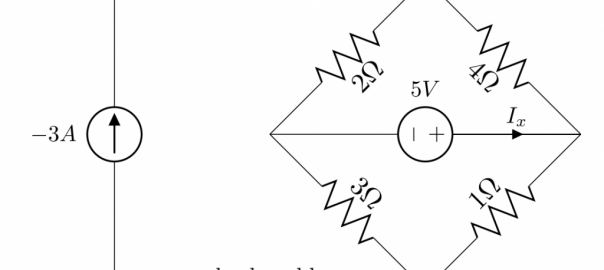Superposition rule is used to solve a DC resistive circuit which has two independent voltage sources and four resistors.
Tag Archives: Superposition
AC Circuit Analysis – Sources with Different Frequencies
In AC circuit analysis, if the circuit has sources operating at different frequencies, Superposition theorem can be used to solve the circuit. Please note that AC circuits are linear and that is why Superposition theorem is valid to solve them. Problem Determine where and . Solution with AC Circuit Analysis Since sources are operating at …
Continue reading “AC Circuit Analysis – Sources with Different Frequencies”
Superposition method – Circuit with two sources
Finding current by using superposition method. There are two independent sources, so we need to turn them off one by one and calculate their contributions.
Superposition Method – Circuit With Dependent Sources
A circuit with two independent and two dependent sources is solved by the superposition method. Independent sources are turned off one at a time and the contribution of the on source is calculated. Dependent sources should not be turned off.
Superposition Problem with Four Voltage and Current Sources
A circuit with two voltage sources and two current sources is solved by the superposition method. The contribution of each source is calculated individually and the response is found by adding the contributions.
Turning Sources Off
Turning off a source used in solving circuits with the superposition, means setting its value equal to zero. A voltage sources become a short circuit when turned off. To turn off a current source it should be replaced by an open circuit. Dependent sources cannot be turned off.




